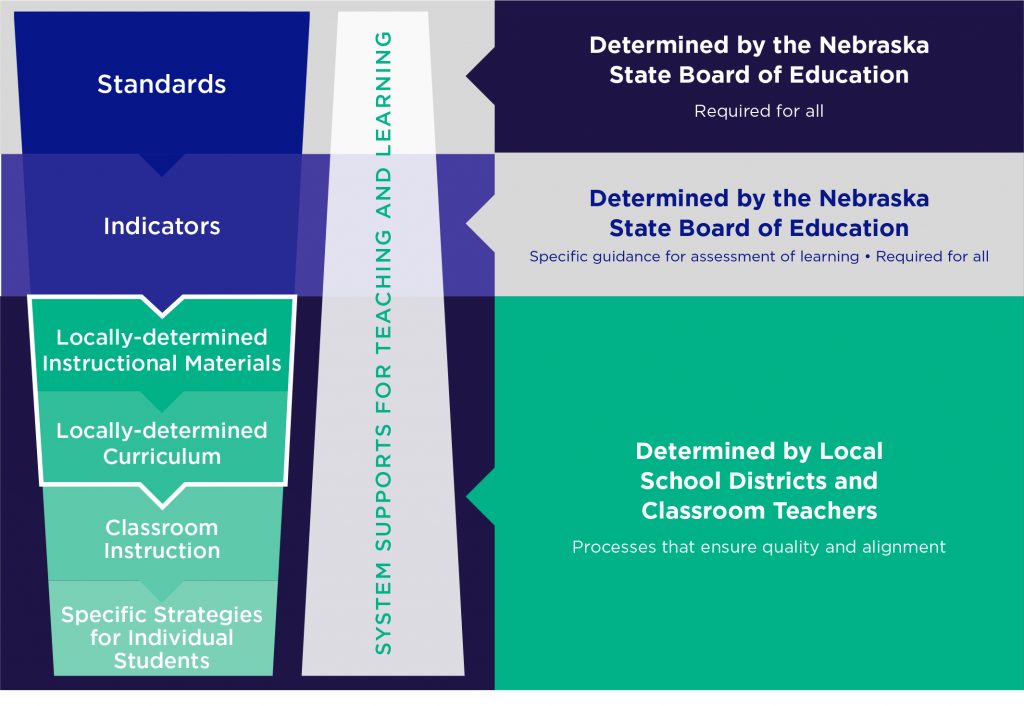Standards to Curriculum
Content Area Standards vs. Curriculum
The Nebraska content area standards describe the knowledge and skills that students should learn, but they do not prescribe particular curriculum, lessons, teaching techniques, or activities. Standards describe what students are expected to know and be able to do, while the local curriculum describes how teachers will help students master the standards. A wide variety of instructional resources may be used to meet the state content area standards. Decisions about curriculum and instruction are made locally by individual school districts and classroom teachers. The Nebraska Department of Education does not mandate the curriculum used within a local school.
Figure 1 (below) provides a model that shows the flow of how learning goals are established through Nebraska content standards and are then addressed through indicators and multiple levels of local curriculum decisions.

The top two tiers of this model––standards and indicators––are identified through Nebraska’s collaborative process of bringing educators and experts together from across the state; they provide goals for learning in each content area throughout a students’ K–12 education. At the local level, districts select or develop a curriculum that best meets the expectations of the content standards and indicators, as well as meets the unique needs of students and families in the local community. Curricula is selected at the local level and can vary significantly from school to school. Most curricula include pacing guidance, lesson plans, and instructional resources/materials (e.g. textbooks, etc.) to guide the organization and planning of units and lessons across the school year.
The third tier of this model, which encompasses classroom instruction and individual student needs, illustrates the increasingly critical role of teachers. Teachers know best the instructional strategies, approaches, and types of help that will support the particular needs of their students. Guidance and data provided by formative, summative, authentic, and diagnostic assessments help teachers identify gaps in student knowledge and skills. The identification of these learning gaps allows teachers to adapt their lessons and best help students learn the required content.
This information, including the references mentioned above, was taken from NDE’s Content Area Standards Reference Guide.


